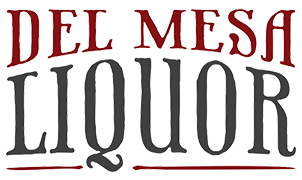Imagine a space in your home dedicated solely to your passion for wine – a personal oasis brimming with an assortment of thoughtfully chosen wines. That's what a home wine cellar embodies for true wine enthusiasts. However, a home wine cellar is not an exclusive luxury meant only for the affluent. It's a dream that anyone with a fervor for wine and a little available room can bring to fruition.
Creating a home wine cellar is about designing a space that transcends the offerings of a regular alcohol store. It's about crafting an environment tailored to your preferences, where each bottle tells a story of your unique wine journey. This guide will equip you with the knowledge to build a home wine cellar that not only accommodates your favorite bottles but also provides a platform for you to explore the myriad nuances of wines.
From deciding the perfect location to curating a diverse collection, and from ensuring optimal aging conditions to enhancing your cellar's aesthetics, we'll guide you through every step of the way. Welcome to the world of home wine cellars!
Identifying The Ideal Location For Your Wine Cellar

The first step to creating your home wine cellar is selecting the right location. A basement or a ground-level room is ideal due to their cool and consistent temperatures. Avoid locations that experience drastic temperature fluctuations or those near sources of heat and vibration, as these factors can adversely affect the quality of the wine.
Considering The Essentials: Temperature And Humidity Control
Wine requires specific conditions for optimal aging. The ideal temperature is between 55-59°F (12-15°C) and should not fluctuate significantly. A wine cellar cooling system is an essential investment to maintain these conditions.
Humidity is another crucial factor. The ideal humidity level for a wine cellar is between 60% and 70%. High humidity can lead to mold growth while low humidity can dry out the corks, allowing air into the bottle and spoiling the wine. You can maintain the right humidity level using a humidifier or dehumidifier as needed.
The Alcohol Store At Home: Curating Your Wine Collection
This is where your personal touch comes into play. You're not just mimicking an alcohol store; you are creating a collection that reflects your palate. Whether you love reds, whites, roses, or a sparkling variety, your collection should include wines you adore and wines you want to explore.
Keep in mind, not all wines are meant to age. Some are better consumed within a few years of production. Be sure to research and select a variety of wines suitable for immediate consumption and those that can age gracefully.
Racking: The Art of Wine Storage
Wine racks not only store your wines but also contribute to the overall aesthetics of your cellar. Racks made of redwood or mahogany are popular choices due to their durability and resistance to humidity. They also provide a traditional look. If you prefer a more contemporary design, consider stainless steel or metal wine racks.
Remember to store bottles horizontally to keep the corks moist, which prevents them from drying out and letting in air.
Building A Space That's More Than An Alcohol Store
When creating your home wine cellar, aesthetics matter. A wine cellar is not just a storage room; it's a place where you can relax, enjoy a glass of wine, and maybe even host wine-tasting parties. Depending on your space and budget, you might want to consider adding a tasting table, ambient lighting, or artwork to create a room that radiates comfort and elegance.

Incorporating Smart Technology
In today’s digital era, technology can greatly enhance the wine-keeping experience. Invest in a smart temperature and humidity monitor to keep a real-time check on the conditions in your cellar. There are also wine cellar management apps that help you track your inventory, record tasting notes, and monitor the aging process of your wines.
Ensure Proper Insulation And Vapor Barriers
A wine cellar must be correctly insulated and sealed to maintain the required temperature and humidity. Insulation with a high R-value (the measure of thermal resistance) is preferable. Similarly, a vapor barrier is essential to prevent moisture migration and condensation within the cellar walls.
Seek Professional Help If Necessary
Creating a home wine cellar is not a small project. From temperature control to interior design, there are many facets that require attention to detail. If the task feels too daunting, don’t hesitate to hire professionals. They can help you design a cellar that meets your needs and reflects your personality, ensuring it's not just an alcohol store, but a wine lover's paradise.
Conclusion: The Joy of Your Own Wine Cellar
Creating your home wine cellar can be a rewarding journey that culminates in a personal space, reflecting your love and passion for wine. With careful planning, diligent selection, and thoughtful design, your home can house a collection that rivals the best alcohol store.
As a wine enthusiast, this is not just about building an alcohol store within your home. It's about creating an environment that enhances the enjoyment of each bottle of wine you have carefully selected. So, here is a toast to your new venture – may your home wine cellar bring you much joy and delightful wine experiences.
 Log in
Log in
 My Wishlist
My Wishlist Reward Program
Reward Program Corporate Gifts
Corporate Gifts Customer Help
Customer Help


